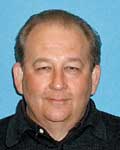This hospital plants R.Ph.s on floors at no added cost
Can a 100-bed hospital reduce medication errors and improve patient safety by increasing its pharmacy's hours and placing pharmacists in direct contact with patients? In January, the Garden Grove (Calif.) Hospital accomplished this feat by implementing a medication reconciliation program without increasing the pharmacy's budget.

Lee Klevens, Pharm.D., Garden Grove's director of pharmacy, told Drug Topics that the program has already reduced drug costs as well as missed doses. In addition, the program has relieved stress among the hospital's nursing staff. "Through the reconciliation process and by getting involved in patient histories, we cut down on duplicate therapies and drug interactions," he said. "Because pharmacists are involved with patients, we are meeting our goal of reducing patient days from 5.3 to 4.9 in the first 90 days. Every tenth of a patient day saved accounts for the salary of a nurse for one day."
In order to minimize the potential for sentinel events, Klevens said his hospital has "established the role of the pharmacist in a documented continuity-of-care process. We have brought our pharmacists to the level of care that creates a bond between things that happened prior to admission or service, during admission or service, during the discharge process, and after discharge. This has proved statistically valid for us in eliminating medication adverse effects."
Another problem Klevens identified has to do with clinical services pharmacists were offering that were not being used. For instance, for the past four years, pharmacists have offered dosing services to physicians for renally impaired patients who were on certain antibiotics, but the amount of dosing or interventions requested by the staff was "minimal," said Klevens.
Klevens went on to say that the hospital realized that there was a substantial entry into the night locker and into the nonpharmacy-licensed areas where medications were kept because pharmacists left the pharmacy early. "Medications were missing, there was no inventory control, no documentation of who got what, when, or where or for what purpose. It was out of control, and it became a significant expense for the hospital because they couldn't track it. If you couple that with missed doses, lack of utilization of skilled pharmacists in clinical areas, and lack of reconciliation on medication administration records, the potential for significant adverse events was much greater than what we documented."
The hospital recognized that there were significant problems that needed to be addressed, not only to meet Joint Commission on Accreditation of Healthcare Organizations standards, but also to increase the level of safety for patients. In response, Garden Grove increased its weekday and weekend pharmacy hours. It also brought two of its five pharmacists to the clinical floor to conduct patient interviews based on meeting checklists that were developed as part of the assessment of pharmaceutical care.
"By changing our hours and by allowing pharmacists to get out of the pharmacy and bringing them to the clinical areas, the amount of dosing or interventions that have been requested by the physicians or healthcare providers has increased 31%," said Klevens. "Pharmacists have been requested to do consultations for dosing or adjustments 2.3% of the time-or 2.3 patients per 100 days. That has reduced the entries into the night locker and has reduced unnecessary use of medication in the hospital by 53.1%. When you reduce undocumented use of medication by 50% or more at a hospital of our size, that's a financial windfall for the hospital."
Klevens said through the hospital's medication reconciliation process, the pharmacists have contact with every patient who comes into the hospital, which has resulted in a 7% reduction in potential adverse events.
Emphasizing that in order to implement a similar program, it is necessary to have the cooperation of the hospital's administration as well as staff pharmacists, Klevens concluded, "You have to give the model enough time to become evident. You have to develop the parameters of the use of the pharmacist. We've introduced a way for the pharmacist to play an important role in medication usage."